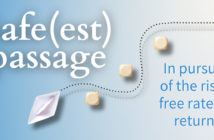by Rushi Shah
For many years, Chinese institutional investors and developers buying up billions of dollars of U.S. commercial real estate (including many high-profile trophy assets) has been front-page news. Recently, however, the Chinese government has clamped down on leverage that was historically used to fund these acquisitions and imposed new capital controls. As a result, those same investors are making headlines again as they succumb to their government’s pressure to divest their large U.S. holdings. Fortunately for the commercial real estate market, this outflow of capital has been offset by an inflow of capital from other countries. As a result, foreign capital remains a solid contributor to the good health of U.S. markets some in the form of equity and other in the form of debt.
As Chinese exit, other foreign capital sources enter the arena
Chinese-backed insurance giants such as Anbang, which was to liquidate U.S. assets by the Chinese government earlier this year, Wanda Group, and HNA Holdings, are among the largest players to face liquidation pressure. Each of the groups held billions of dollars of U.S. commercial real estate, including hospitality assets. Potential negative effects from the mass sell-off have been tempered by the available liquidity in the market to absorb the added supply. Capital from Korea, Israel, and other Middle-Eastern countries has stepped in to fill the void left by the Chinese. European investors, especially German and French, are also very active in the U.S. market, along with large institutional funds and family offices from Indonesia and Malaysia. Unlike the Chinese, Hong Kong domiciled capital have been subject to less direct pressure to divest. Domestic investors are also taking advantage of this opportunity to bolster their portfolios. Large-scale developers and institutional private and public equity funds continue to snap up properties in search of yield. Due to this healthy demand for U.S. properties, prices have not adjusted downward dramatically.
Foreign capital continues to play strong role in debt capital markets
Given the optimism around U.S. domestic economic policy, and the historically-relatively-stable U.S. markets, capital remains abundant in the debt capital markets. Many large U.S.-based investment banks are looking to foreign investors to syndicate their large loan positions. For example, a French-based investment bank operating in New York recently closed a $270 million transaction for a downtown Chicago JW Marriott hotel on its balance sheet. The bank then sold off the majority of the loan pieces to Asian and European insurance companies, investment banks, family offices, and hedge funds. In accordance with risk-retention rules that came out of Dodd Frank, the bank also retained a small slice of risk, and securitized a very senior piece into the U.S. debt markets. Every major investment bank is following suit. This strategy can be very profitable for banks, because the risk-adjusted return requirements for the foreign investors are less than that of U.S. investors in most cases. This risk-return arbitrage leads to hotel and other commercial real estate owners benefiting from getting higher leverage financing for lower rates.
Expanded financing options for value-add properties
On a smaller scale, many Asian and Middle-Eastern investors are funding debt platforms that in turn lend money on senior, secured loans backed by less-than-stabilized hospitality, office, industrial, retail, multifamily, self-storage and other asset classes. These increased capital options translate into increased borrower leverage. Typically priced between 8 percent and 9 percent, hoteliers with projection-based deals can take advantage of this higher-priced foreign capital for transitional assets that are not yet ready for lower-cost, long-term permanent debt. An experienced intermediary or investment banker can leverage his or her lender relationships and expertise to compare available foreign-backed capital options and weigh them against domestic counterparts to determine the optimal sources of funds for your hotel.
EB-5 program uncertainty
Another popular mechanism of foreign inflows has been the immigration-based EB-5 capital investment program. The program essentially offers citizenship in exchange for investment. In light of new pending immigration reform and ongoing Chinese trade issues, this program has found itself under the microscope and is facing potential future uncertainty which could spill-over into hotel. Congress has discussed revamping the program to increase the dollar limits for individual citizenship. The EB-5 program has garnered significant attention from hotel investors and developers because it’s cheap money. Although it sounds advantageous, the transaction process is long and successful execution is uncertain. For every 100 deals in the pipeline, maybe two to five deals will actually make it to the closing table.
Foreign capital’s sweet spot
In prior economic cycles, foreign capital was reserved for gateway markets such as New York, San Francisco, Los Angeles, Chicago, Boston, Seattle and Miami. Fast forward to today, and you’ll see a strong current of foreign capital also flowing into most secondary markets. This is good news for asset owners and developers in Nashville, Austin, Dallas, Houston, Atlanta, Orlando, Milwaukee, Kansas City, St. Louis, Denver, Phoenix, as well as select tertiary markets such as Oklahoma City, Salt Lake City and Boise.
When it comes to hospitality assets, foreign capital typically gravitates toward flagged assets that are backed by the fail-safe mechanisms of the franchise brands. By lending in different countries, foreign investors already face increased risk out of the typical comfort zone, spoiling their appetite to take on more. The cushion of the flag’s added marketing muscle is especially critical for hotels in secondary and tertiary markets. Bottom line, if a foreign investor controlled fund is doing a deal in Salt Lake City, a decent flag is required.
Foreign nationals buying assets in the U.S. are subject to an added level of control. First, they can only do Wall Street capital transactions. Bank loans are typically not an option. Second, they must undergo additional scrutiny during the due diligence process. Lenders are required to execute deeper “Know Your Customer Checks” and sanction checks, which increase the paperwork and frequently extend the transaction timeline. Although there is no way to circumvent these additional steps, an experienced intermediary or investment banker can help foreign buyers better navigate the process.
Expected short- and long-term market effects of foreign capital supply
The net effect of these trends in foreign capital on the U.S. commercial real estate market should be positive. Even in this stage of the economic recovery cycle and even as Chinese investors are forced to offload additional assets, plenty of new foreign capital is rushing in for U.S.-based assets. As a result, foreign investors continue to look favorably on the U.S. debt market as a good risk-adjusted return opportunity. Furthermore, commercial real estate equity investors consider the relatively low-volatility in commercial real estate as a positive data point in favor of owning U.S. real estate.




